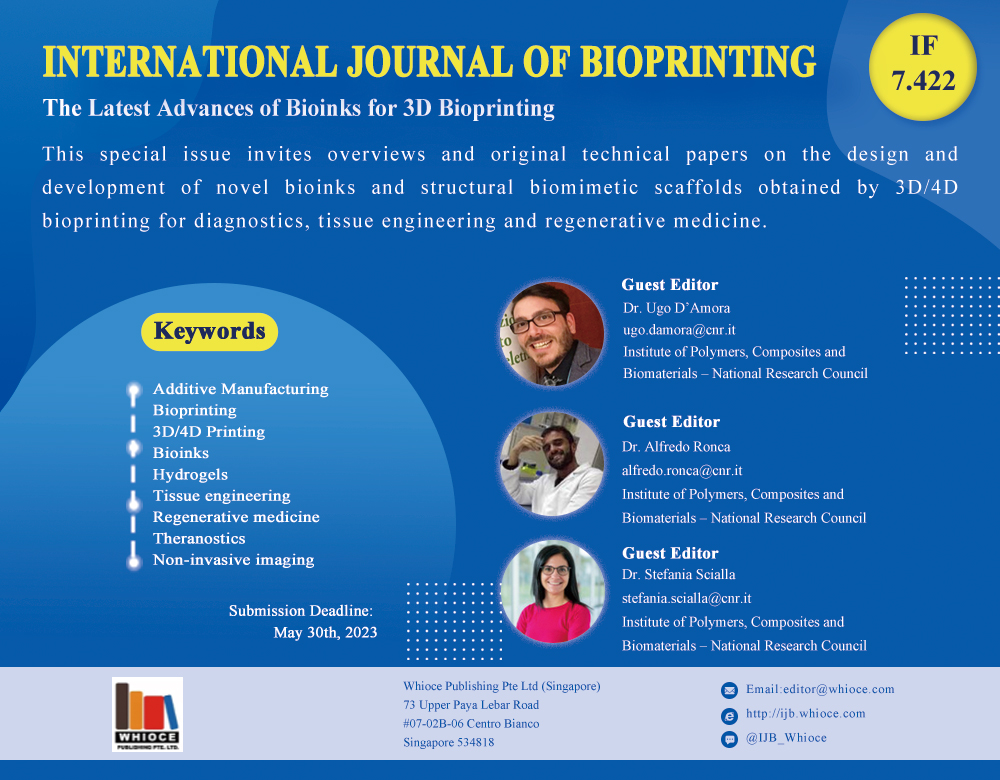
Dear Colleagues,
Over the last decades, the synergistic contribution of innovative fabrication technologies, such as additive manufacturing (AM), and bio-functionalization strategies have led to the development of biomimetic scaffolds characterized by improved physico-chemical, mechanical, and biological properties. Notably, 3D bioprinting allowed mimicking complex tissues through the controlled deposition of cell-seeded bioinks. However, the challenge to select a bioink, capable of emulating the structural properties of natural tissues, alongside possessing specific rheological features and the ability to recapitulate the exact cell microenvironment, adds, in biomaterial science, a great level of complexity. In addition, the possibility of incorporating organic-inorganic hybrid nanostructures within bioinks allows getting an ideal theranostic platform, able to synergically combine the stimuli-responsive capability along with non-invasive imaging features. Bearing this in mind, the design of innovative multifunctional bioinks with tailored properties has recently gained high attention, exploding in a myriad of biomedical applications, also related to 4D bioprinting.
This special issue invites overviews and original technical papers on the design and development of novel bioinks and structural biomimetic scaffolds obtained by 3D/4D bioprinting for diagnostics, tissue engineering and regenerative medicine.
Three-dimensional bioprinting for musculoskeletal regeneration and disease modeling




